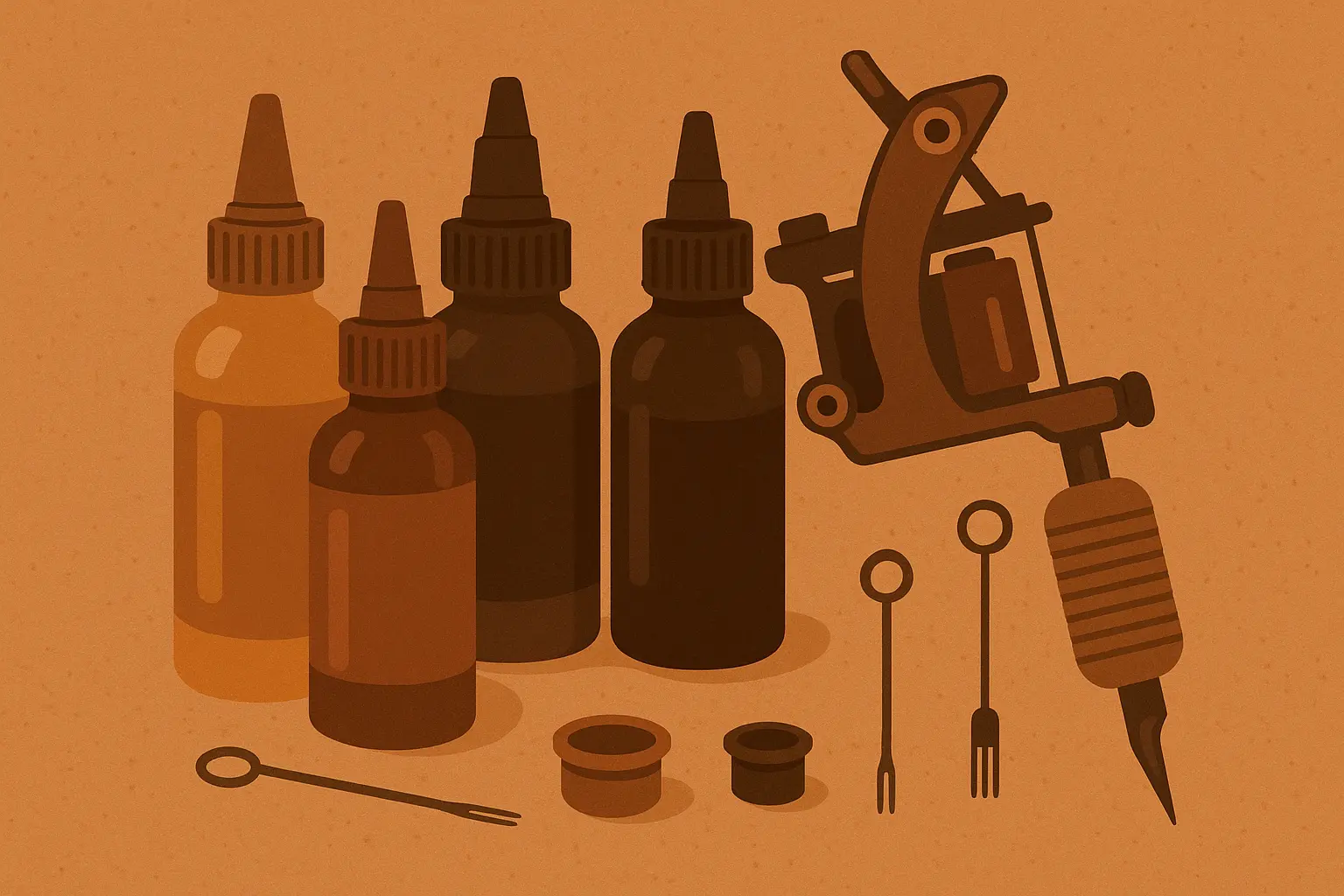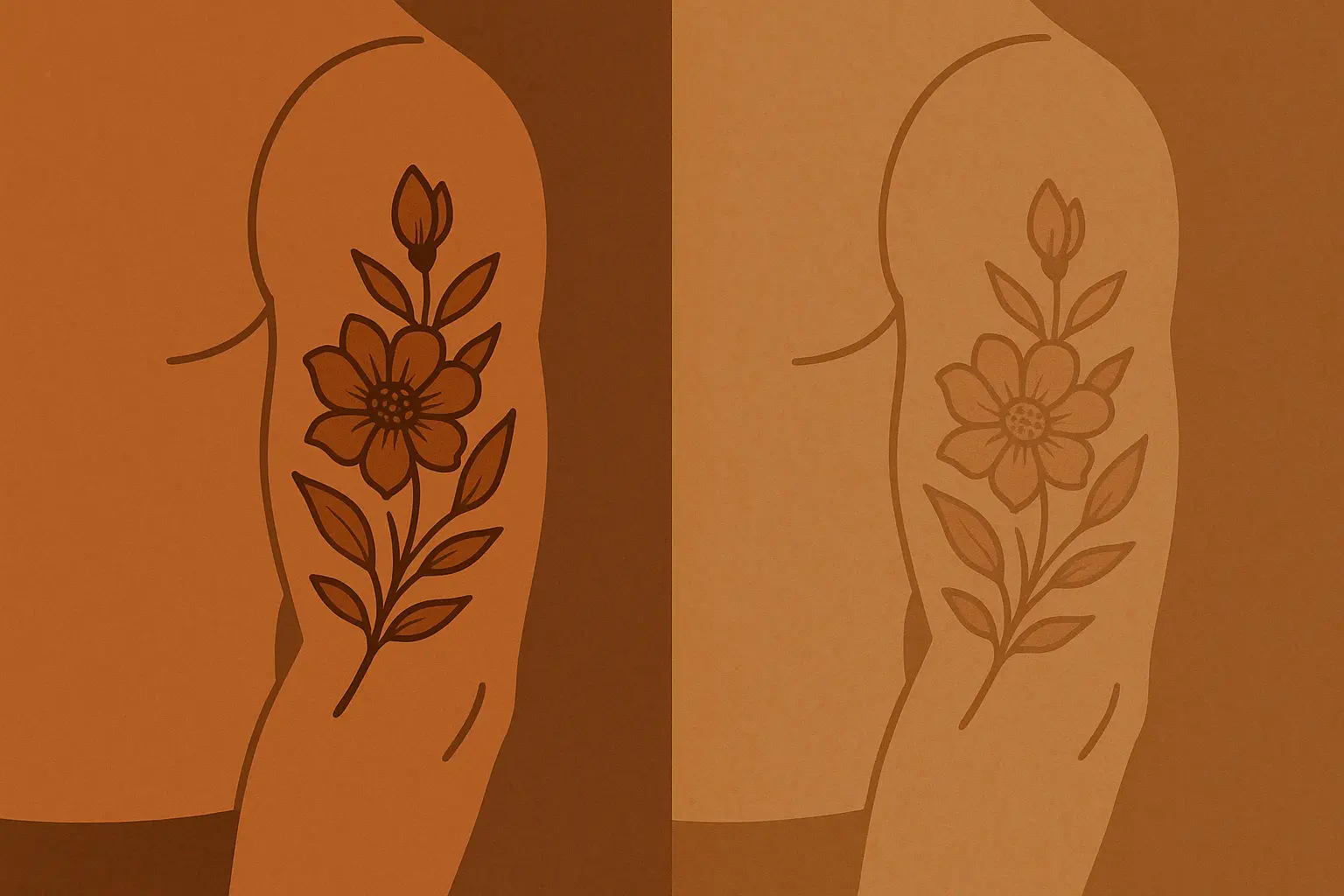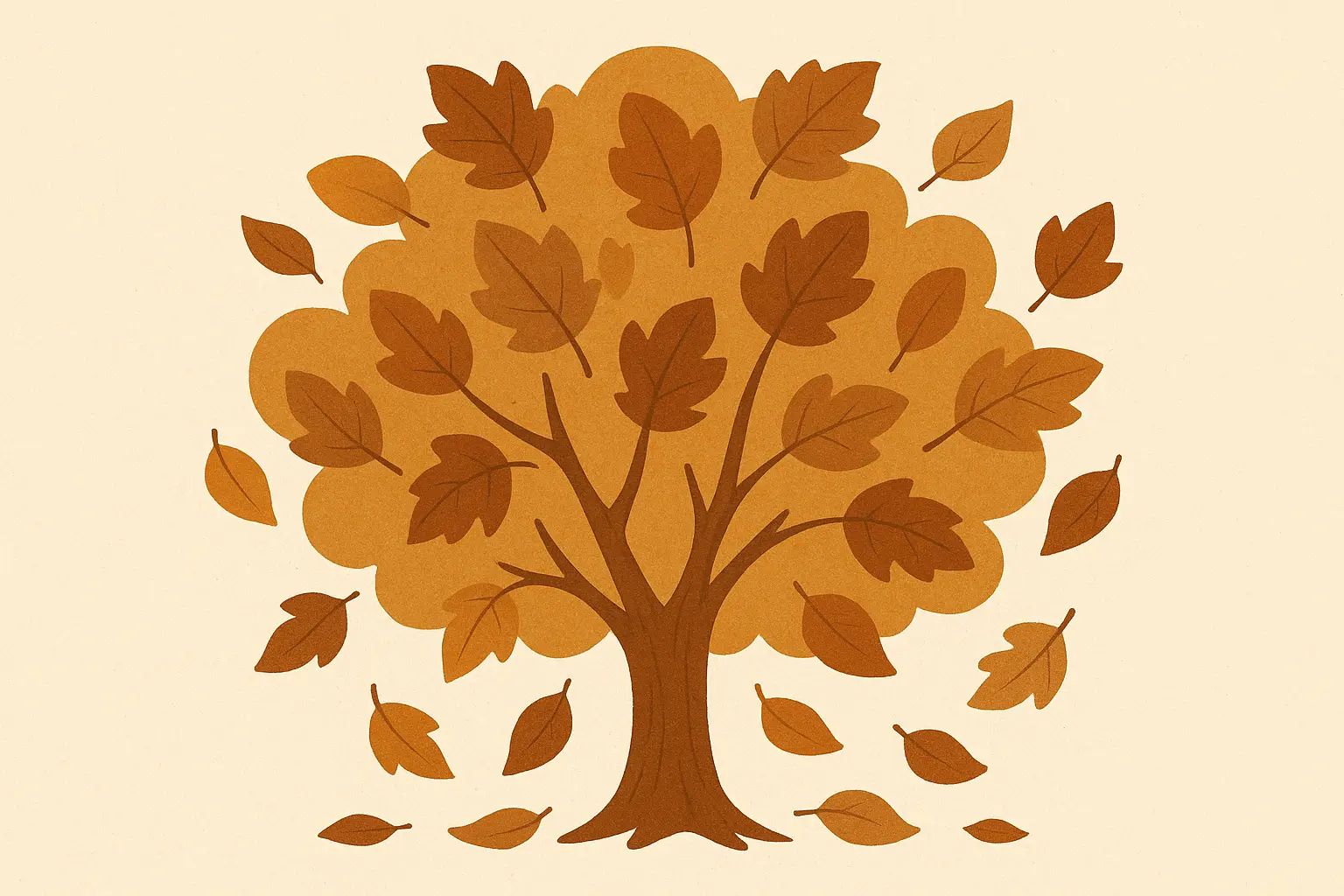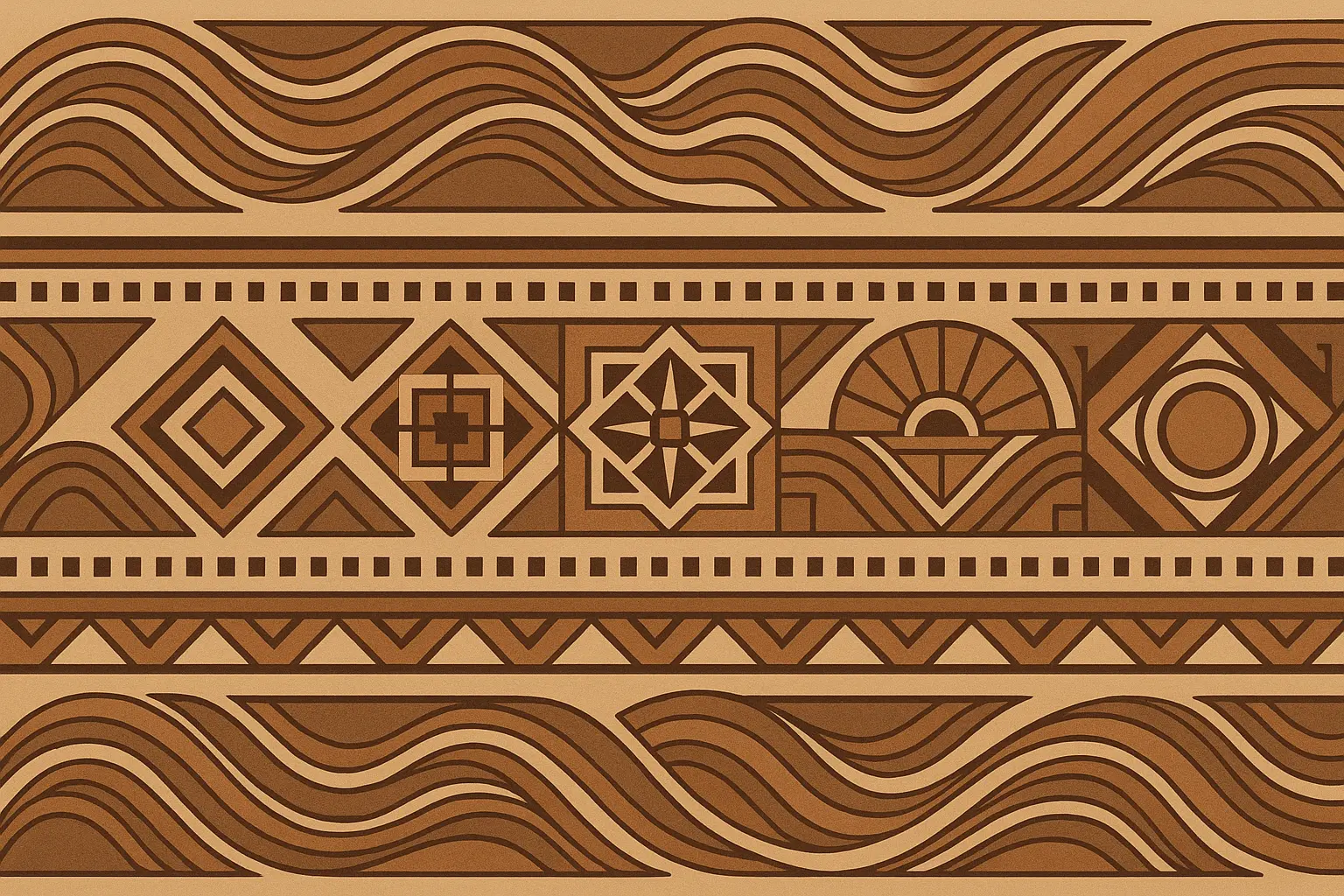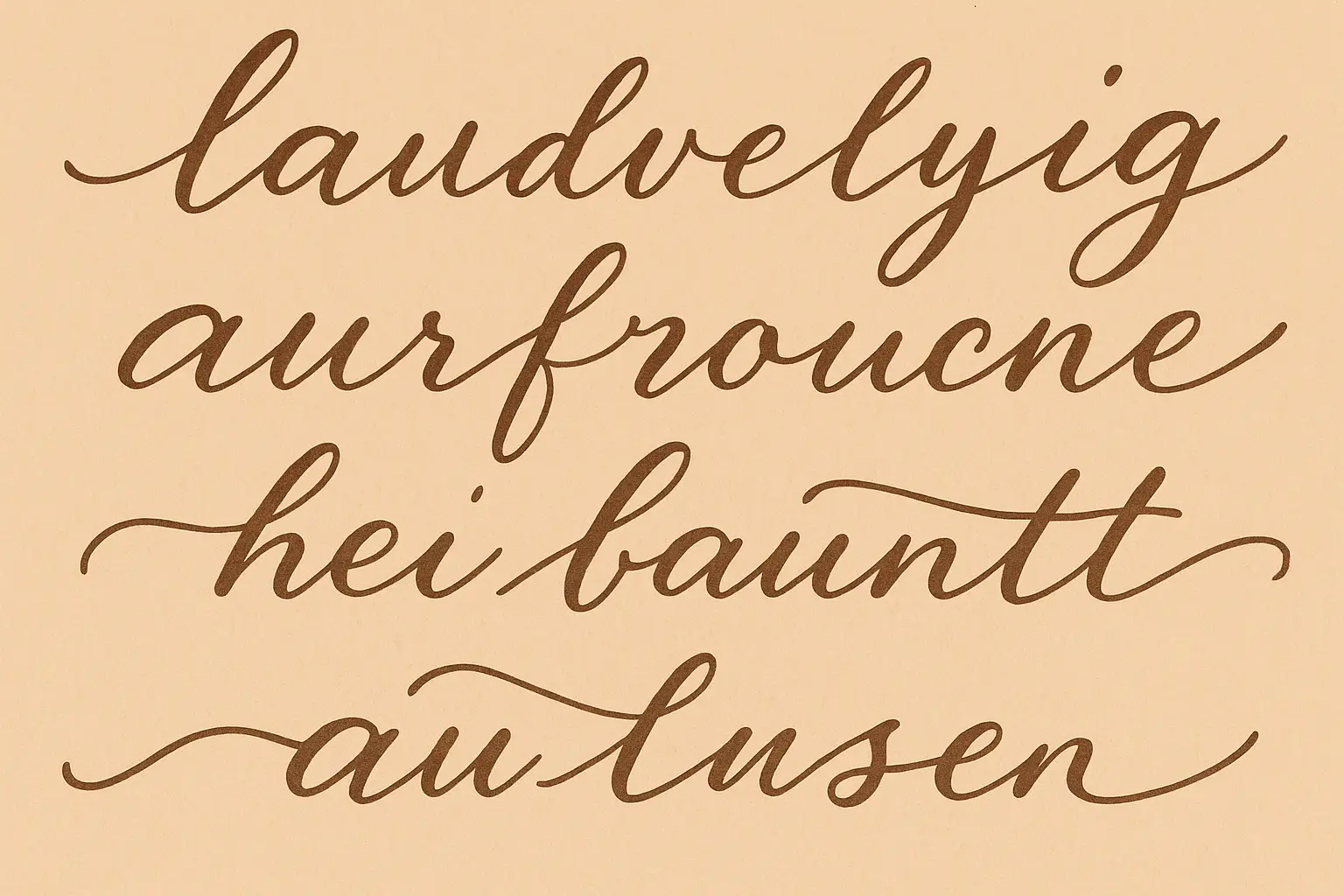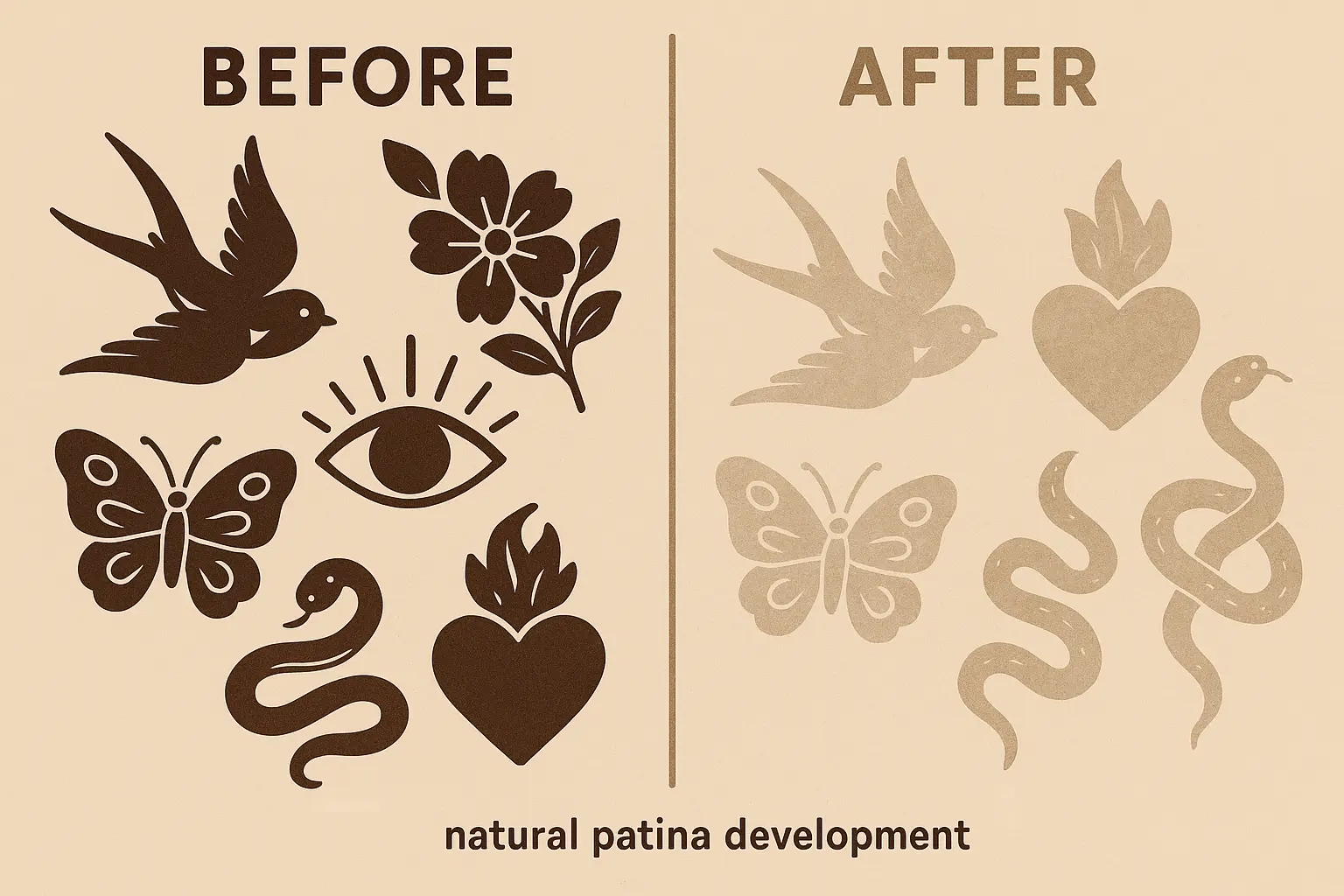25 Brown Tattoo Ideas That Will Make You Ditch Black Ink Forever
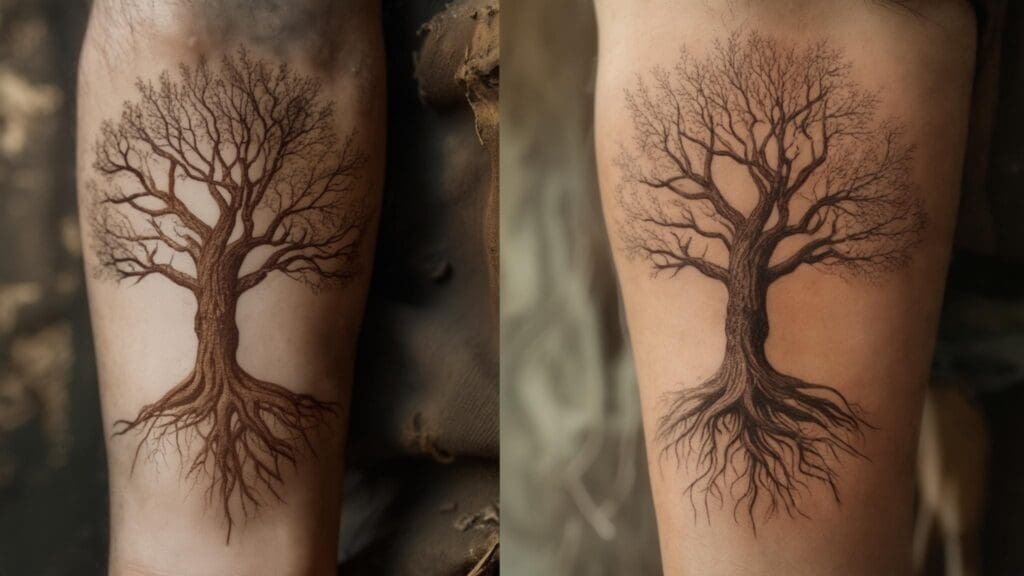
I’ve been fascinated by brown tattoos ever since I watched my friend Sarah get her first one. She was worried the brown ink wouldn’t show up properly on her deep skin tone, but two years later, her botanical piece has become the most complimented tattoo in our entire friend group. The warm undertones complement her skin beautifully, proving that brown ink works magnificently across all complexions.
According to Allure’s comprehensive tattoo guide, colorful ink can absolutely be tattooed on darker skin tones – it just requires artists who understand undertones and color theory. Look, brown tattoos aren’t just some Instagram trend. They’re a completely different approach to body art that offers something black ink simply can’t – that warm, natural look that ages like fine wine instead of fighting against time.
Table of Contents
-
What You Need to Know Before Getting Brown Ink
-
Understanding Brown Ink and How It Heals
-
Will Brown Ink Work on Your Skin Tone?
-
How These Designs Age Over Time
-
1. Realistic Brown Bear Portrait
-
2. Autumn Tree with Falling Leaves
-
3. Minimalist Mountain Range
-
4. Realistic Wood Grain Pattern
-
5. Desert Landscape with Cacti
-
6. Vintage Sepia Portrait
-
7. Pin-up Girl in Brown Tones
-
8. Realistic Hand Study
-
9. Child’s Portrait Memorial
-
10. Minimalist Face Silhouette
-
11. Sacred Geometry Mandala
-
12. Minimalist Triangle Composition
-
13. Art Deco Pattern Band
-
14. Celtic Knot in Brown
-
15. Minimalist Dot Work
-
16. Vintage Script Quote
-
17. Minimalist Word Art
-
18. Handwritten Style Message
-
19. Gothic Lettering in Brown
-
20. Native American-Inspired Feather
-
21. Buddhist Symbol in Brown
-
22. Vintage Compass Rose
-
23. Realistic Rose in Brown Tones
-
24. Minimalist Branch with Leaves
-
25. Vintage Botanical Illustration
-
How These Designs Actually Hold Up
-
Making Your Brown Tattoo Dreams Reality
TL;DR
-
Brown tattoos offer a sophisticated, earthy alternative to black ink that looks natural on literally everyone
-
Good brown ink stays rich and warm for years, but cheap stuff turns muddy or greenish (trust me, don’t go cheap)
-
Fine line work in brown is gorgeous but harder to pull off – make sure your artist actually knows what they’re doing
-
Simple designs barely need touch-ups, complex ones might need some love every 5-7 years
-
Brown ink is perfect for nature themes, portraits, vintage vibes, and minimalist pieces
-
Your tattoo will look super dark at first (don’t freak out), then settle into beautiful warm tones after 4-6 weeks
-
You’ll need to be religious about sunscreen since brown fades faster than black in UV light
What You Need to Know Before Getting Brown Ink
Here’s the thing about brown tattoos – they’re not just black ink’s gentler cousin. They behave completely differently, and if you don’t understand that going in, you might end up disappointed. I’ve seen too many people walk into shops expecting brown to work exactly like black, and that’s just not how it goes.
When considering your first brown tattoo, understanding tattoo pain levels becomes crucial since brown ink often takes longer sessions to get the color just right. My tattoo artist Maria told me she’s seen way too many people come in wanting to “fix” cheap brown tattoos that turned an awful greenish color.
Understanding Brown Ink and How It Heals
Not all brown ink is created equal, and you’ll figure that out real quick once your tattoo heals. The good stuff has more pigment packed in, so it doesn’t fade to that muddy mess you see on people who went cheap. When you invest in quality brown ink, it develops these gorgeous warm undertones that actually make your skin look better.
Here’s what nobody tells you about healing with brown ink – your tattoo is going to look WAY darker than you expected for the first week. I was honestly terrified my brown tattoo would look like a giant smudge, but three months later I’m obsessed. That initial darkness gradually lightens as your skin heals, revealing the true brown tones underneath.
The whole healing process takes about 4-6 weeks, and the final color doesn’t really settle until around week six. Quality brown ink will stay gorgeous for 10-15 years when you take care of it properly. But here’s the harsh truth – cheap alternatives often fade to muddy browns or develop this gross greenish tint that’ll cost you way more to fix than just doing it right the first time.
|
Ink Quality Level |
How Long It Lasts |
What Happens Over Time |
Price Range |
When to Use It |
|---|---|---|---|---|
|
Premium |
10-15 years |
Rich warm tones, barely fades |
$150-300+ |
Complex portraits, detailed work |
|
Standard |
7-10 years |
Pretty stable, gradual fading |
$80-150 |
Simple designs, basic shading |
|
Budget |
3-5 years |
Turns muddy or greenish |
$40-80 |
Just don’t |
Will Brown Ink Work on Your Skin Tone?
This is probably the question I get asked most, and here’s the honest answer: brown tattoos look amazing on everyone. Seriously. On darker skin, brown ink creates this beautiful contrast without those harsh lines that black can give you. The warm tones just blend with your natural skin color in a way that feels organic.
If you have lighter skin, brown tattoos give you that sophisticated look without being too in-your-face. Dark brown gives you bold definition while still feeling natural, and light brown is perfect for those “whisper, don’t shout” vibes.
My friend Maria has olive skin with golden undertones, and she got this medium brown botanical design on her forearm. The amber-toned brown ink matched her natural coloring so perfectly that people ask if it’s a birthmark. That’s the magic of brown – it looks like it belongs on your skin instead of sitting on top of it.
Your skin’s undertones matter here. If you have warm undertones (golden, yellow, peachy), you’ll look amazing with amber and chocolate browns. Cool undertones (pink, red, blue) work better with grayer browns. Honestly, ask for a color test if you’re unsure. It’s a small investment that could save you from a big mistake.
How These Designs Age Over Time
Fine line work in brown is absolutely gorgeous, but here’s the real talk – it’s harder to pull off than black. The lighter color means fine details might not stay as crisp over the years. But when it’s done right by someone who actually knows brown ink, these tattoos develop this amazing vintage, weathered look that’s way cooler than stark black lines.
Complex shading in brown requires an artist who really gets color theory. They have to layer different brown tones carefully to create depth without turning everything into mud. This is why you’ll pay more for intricate brown work – but trust me, it’s worth every penny.
Different designs age differently too. Simple geometric patterns and bold lettering hold up the longest, while fine line work and detailed portraits might need some touch-ups down the road. But here’s the cool part – an aged brown tattoo often gets more character, especially with nature themes.
Understanding fine line tattoo aging helps you know what to expect with brown fine line work. The natural aging process actually makes certain brown tattoo styles look better. Vintage pieces, nature designs, and cultural symbols develop this authentic patina that adds character instead of taking it away.
1. Realistic Brown Bear Portrait
Wildlife portraits in brown ink are absolutely stunning, and bear designs are perfect examples of why. Think about it – bears are naturally brown, so using brown ink instead of black just makes sense. You can layer different shades from honey amber highlights to rich chocolate shadows to create fur texture that looks incredibly real.
This is definitely complex work that’ll take 6-8 hours with an artist who specializes in realistic animal portraits. They need to understand how brown ink behaves differently than black – it’s lighter, so they need more passes to get proper saturation. Your artist needs to know animal anatomy inside and out to make this convincing.
Don’t cheap out on the ink for this one. Poor quality brown will fade unevenly and destroy that realistic fur texture that makes this design special. Yeah, you’ll probably pay $800-1500 for quality work, but you won’t regret spending more when people can’t stop staring at your incredible bear tattoo.
2. Autumn Tree with Falling Leaves
Seasonal themes are where brown ink really shines, and autumn trees capture that perfect warm palette. The brown trunk and branches create natural depth while falling leaves in amber, rust, and chocolate tones add movement. This works great as a smaller piece if you’re testing the brown ink waters.
This is medium complexity, so most experienced artists can handle it without being specialists. You’re looking at 3-4 hours of work, which keeps costs reasonable while still getting serious visual impact. Great spots include forearms, shoulders, and upper back where the vertical design flows naturally.
Here’s the cool part – this design actually gets better with age. As the brown ink develops that natural patina over time, the tree looks more weathered and authentic. It’s one of those tattoos that improves instead of degrading, making it a smart long-term choice.
3. Minimalist Mountain Range
Mountain silhouettes in light brown create this sophisticated minimalist vibe that’s perfect for outdoor lovers and design enthusiasts. The clean geometric shapes rely on precise line work rather than complex shading, making it ideal for professional environments where you want something meaningful but not overwhelming.
Don’t let the simple look fool you though – fine line work in brown is tricky. The lighter color means your artist needs perfect technique to ensure those lines heal cleanly and stay sharp. Find someone who specializes in fine line work AND understands brown ink properties.
Placement matters for longevity. Areas that don’t stretch much and get less sun exposure will keep those lines crisp longer. Think inner forearms, upper back, or ribcage. The investment in skilled work pays off when your mountain range still looks sharp years later.
4. Realistic Wood Grain Pattern
Wood grain patterns are like the holy grail of brown ink artistry. When done right, they look three-dimensional on flat skin. Your artist basically has to paint with different shades of brown to make it look real – it’s way trickier than it sounds.
This requires someone who understands actual wood grain patterns and can translate them into tattoo form. They’ll layer light amber bases with darker chocolate accents to create the natural variation you see in real wood. We’re talking 4-6 hours of concentrated work from a specialist.
Premium ink is non-negotiable here. Those subtle tonal variations that create the wood grain effect disappear with cheap ink, leaving you with muddy brown patches instead of convincing texture. Budget $600-1200 for proper execution.
The aging process actually makes this design more realistic. As brown ink develops natural patina, the wood grain looks more authentic and weathered. It’s one of the few tattoo styles that literally gets better with age.
5. Desert Landscape with Cacti
Desert landscapes come alive in brown tones, capturing that natural earthiness perfectly. The warm brown palette represents sand, rock formations, and desert plants without needing harsh black contrasts. Cacti silhouettes in dark brown create focal points against lighter brown backgrounds.
This is medium complexity work that most experienced artists can handle without specialist training. You’re looking at 3-5 hours of work, balancing detail with affordability. Smart use of negative space prevents the design from looking too heavy while maintaining visual impact.
This works well in larger areas where the horizontal landscape composition flows naturally. The design scales from 4-inch accent pieces to full sleeve elements, giving you flexibility based on your commitment level.
Desert themes naturally suit that weathered, vintage look that develops as brown ink ages. The organic subject matter disguises any minor line spreading or color settling that might hurt geometric designs.
6. Vintage Sepia Portrait
Sepia portraits are where brown ink really shows off. The natural sepia tones eliminate the need for artificial aging effects – you get that authentic vintage look from day one.
Take my friend James, who wanted to honor his grandfather with a memorial tattoo. Instead of harsh black, he chose sepia-style brown tones. His artist used light amber for skin highlights and deep chocolate for shadows, creating this photograph-like quality that perfectly captured his grandfather’s gentle expression. The brown made the portrait feel warm and comforting instead of stark and somber.
This requires a portrait specialist with extensive brown ink experience. The subtle tonal ranges that create realistic skin tones, hair texture, and facial features demand perfect color control. If your artist seems unsure about brown ink, find someone else.
Don’t cheap out on ink for portrait work. These contain the finest details in tattooing, and those elements disappear first when low-quality inks fade or shift color.
Here’s the cool part about aging – sepia portraits actually gain authentic vintage character as the brown ink develops patina. Your portrait gets more character over time instead of losing it.
7. Pin-up Girl in Brown Tones
Pin-up designs reach their full vintage potential in brown tones instead of traditional black. The warm brown palette captures that golden age of American illustration while creating softer, more romantic appeal. Perfect if you want classic imagery without the aggressive look.
This requires someone experienced in traditional American tattooing styles. The flowing lines, strategic shading, and period details demand understanding of pin-up art history plus technical skill with brown ink. Expect 4-6 hours for full-sized pieces.
Brown ink’s natural warmth enhances the feminine curves and soft features that define pin-up art. The aging characteristics actually favor this style – pin-ups naturally suit vintage, weathered appearances that develop as brown ink ages.
8. Realistic Hand Study
Hand studies are some of the most challenging tattoo work out there, and brown ink elevates them to fine art status. The natural skin tones you can achieve with brown create more realistic flesh than black alternatives. Every wrinkle, vein, and texture detail becomes possible.
This demands someone with extensive knowledge of hand structure and proportion. The complex shading required to create three-dimensional appearance on flat skin challenges even experienced artists. Expect 5-8 hours of concentrated work for detailed hand studies.
Your artist basically has to layer multiple brown tones to create realistic skin depth. Light amber bases get darker brown shadows in natural crease patterns, while highlights stay skin-toned for maximum realism. This needs premium ink to maintain those subtle distinctions.
The aging process enhances realism rather than hurting it. As brown ink develops natural patina, hand studies look more lifelike and weathered.
9. Child’s Portrait Memorial
Memorial tattoos carry huge emotional weight, and brown ink provides the gentle warmth that black just can’t offer. The soft, natural tones create comforting reminders instead of stark ones. Child portraits especially benefit from brown ink’s ability to capture innocent, peaceful expressions.
The emotional significance means you absolutely cannot compromise on ink quality or artist skill. Memorial pieces need to maintain their integrity forever, making quality investments non-negotiable. The subtle tonal ranges required for realistic child portraits disappear with cheap inks.
You need a portrait specialist with experience in sensitive subject matter who understands brown ink properties. The emotional weight of memorial tattoos requires artists who approach the work with appropriate reverence and technical skill.
The gentle aging of brown ink creates authentic vintage appeal that enhances rather than detracts from memorial significance. That warm patina adds emotional depth to these meaningful pieces.
10. Minimalist Face Silhouette
Profile silhouettes capture essential human features through minimal line work, and light brown creates sophisticated subtlety. This appeals to people wanting meaningful body art without bold visual impact. The gentle brown tones whisper instead of shout – perfect for professional environments.
The technical simplicity makes this accessible to most competent artists without requiring specialists. Clean lines and basic shapes focus on precision rather than complex shading. Usually takes 1-2 hours, keeping costs reasonable for first-timers.
You’ve got placement flexibility for intimate or visible positioning depending on preference. Popular spots include wrists, ankles, behind ears, or inner forearms where the subtle light brown tones create personal statements without overwhelming presence.
The clean lines and minimal detail maintain integrity longer than complex brown designs. As brown ink develops patina, silhouettes gain vintage character that enhances their timeless appeal.
11. Sacred Geometry Mandala
Sacred geometry reaches new heights in brown tones instead of traditional black. The warm earth colors create spiritual connection while multiple brown shades add depth that’s impossible with single-color approaches. Mandala designs especially benefit from brown ink’s ability to create subtle gradations between geometric elements.
This requires someone who specializes in mathematical accuracy and symmetrical designs. The complex patterns demand perfect line work and consistent spacing throughout. Even minor imperfections become obvious in geometric compositions.
Multiple brown tones create dimensional effects that flat black just can’t achieve. Light amber centers transition through medium browns to dark chocolate outer rings, creating visual depth that draws the eye inward. This layering needs premium brown ink to maintain distinct separations between shades.
The natural patina that develops in brown ink actually adds authentic spiritual character to sacred geometry. That weathered appearance creates connection to ancient traditions and timeless wisdom.
12. Minimalist Triangle Composition
Geometric minimalism finds perfect expression in brown fine line work, creating sophisticated designs that complement modern lifestyles. Triangle compositions offer endless variation through size, arrangement, and brown tone selection. Clean lines and basic shapes appeal to those preferring understated elegance.
But don’t let the apparent simplicity fool you. Fine line work in brown demands exceptional precision and understanding of how lighter colors behave during healing. Lines must be perfectly straight and evenly weighted to maintain geometric integrity over time.
Premium ink becomes absolutely essential for fine line longevity. Those thin lines that define geometric compositions disappear first when cheap inks fade or spread.
Professional environments particularly favor this approach. The subtle brown tones and clean geometric shapes integrate seamlessly with business attire and conservative dress codes. Perfect for career-focused people wanting meaningful body art.
13. Art Deco Pattern Band
Art Deco patterns come alive in brown applications, capturing the golden age of American design through warm, sophisticated tones. The geometric patterns and flowing lines that define this era gain authentic vintage character when done in brown instead of stark black. Band placements work particularly well for Art Deco motifs.
This is medium complexity work that’s accessible to experienced artists familiar with geometric patterns. The repetitive elements require consistency and precision but don’t demand specialist training. Usually takes 2-4 hours depending on band width and pattern complexity.
Brown ink’s natural vintage appeal perfectly complements Art Deco aesthetics. The warm tones evoke that jazz age atmosphere while creating sophisticated elegance that transcends temporary trends.
Great placement options include areas where band compositions flow naturally around body contours. Upper arms, wrists, ankles, and thighs provide ideal canvases for Art Deco bands.
14. Celtic Knot in Brown
Celtic knotwork gains new dimension in brown tones instead of traditional black. The interwoven patterns benefit from brown ink’s ability to create depth through subtle shading. Different brown tones can distinguish overlapping elements while maintaining the continuous flow essential to Celtic design.
This requires someone familiar with Celtic art traditions and the mathematical precision underlying knotwork patterns. The continuous lines must flow seamlessly while creating the illusion of three-dimensional weaving. This complexity demands specialized knowledge and brown ink experience.
Celtic designs naturally suit weathered, ancient appearances that develop as brown ink ages. The patina that emerges creates authentic connection to historical traditions and cultural heritage.
Cultural significance demands respectful execution and understanding of Celtic symbolism. Choose artists who appreciate the spiritual and historical importance instead of treating it as mere decoration.
15. Minimalist Dot Work
Dot work techniques create unique textures impossible through traditional line work, and light brown adds sophisticated subtlety to these patterns. The gentle brown tones allow dot work to create visual interest without overwhelming boldness. Perfect for those wanting textural elements in their body art.
Each dot must be perfectly round and consistently sized to create the intended pattern. Brown ink’s lighter color requires perfect technique to ensure dots heal cleanly and maintain definition over time.
This needs specialist expertise. The technique requires different needle configurations and application methods than traditional tattooing. Find an artist who’s actually excited about dot work, not just willing to try it.
The small individual elements can blur together over time if not done with sufficient spacing and proper ink saturation. Plan for potential touch-ups to maintain pattern clarity as the tattoo ages.
16. Vintage Script Quote
Script lettering transforms completely in brown applications instead of traditional black. The warm tones create romantic, vintage appeal that harsh black text just can’t achieve. Quote tattoos especially benefit from this softer approach, making meaningful words feel more intimate and personal.
For inspiration on meaningful text, explore our collection of powerful tattoo quotes that work beautifully in brown ink applications.
|
Script Style |
Difficulty Level |
How It Ages |
Best Placement |
Maintenance |
|---|---|---|---|---|
|
Simple Cursive |
Easy |
Stays readable |
Forearms, ribs |
Barely any |
|
Ornate Script |
Hard |
May lose fine details |
Upper back, thigh |
Touch-ups every 7-10 years |
|
Hand Lettering |
Medium |
Good with proper spacing |
Chest, shoulder |
Some |
|
Gothic Script |
Hard |
Bold elements hold up well |
Back, upper arm |
Not much |
Readability is the main concern for script work in brown ink. The lighter color requires perfect execution to ensure letters stay legible as the tattoo ages. Your artist must understand how brown ink behaves in fine lettering and adjust their technique accordingly.
Font selection impacts longevity big time. Ornate scripts with thin connecting lines might not age well in brown, while bolder cursive styles stay readable longer. Talk font choices through carefully with your artist to balance looks with long-term legibility.
17. Minimalist Word Art
Single word tattoos gain sophisticated elegance in brown applications instead of black. The gentle tones create intimate personal statements without aggressive visual impact. Perfect for meaningful mantras, names, or concepts that hold deep personal significance.
The simplicity makes this accessible to most competent artists without requiring lettering specialists. Clean, simple fonts translate well to brown ink while maintaining readability over time. Usually takes 30-60 minutes, making this an affordable entry point into brown work.
Size considerations become important for brown text longevity. Words should be sized appropriately for the chosen placement – minimum half-inch letter height ensures readability as the tattoo ages.
Choose words that will remain meaningful throughout your life rather than temporary inspirations. The gentle aging of brown ink actually enhances the personal, intimate nature of these designs over time.
18. Handwritten Style Message
Handwriting recreation is the most personal form of text tattooing, and brown execution enhances this intimacy through warm, gentle tones. Whether reproducing a loved one’s handwriting or your own script, brown ink creates softer emotional impact than stark black alternatives.
This requires someone experienced in handwriting reproduction. The irregular letter spacing, unique character formations, and personal quirks that make handwriting recognizable must be captured precisely. This demands careful attention to detail and understanding of individual writing characteristics.
Handwriting tattoos often commemorate lost loved ones or meaningful relationships, making quality investments essential. The subtle imperfections that make handwriting personal must be preserved through superior ink and technique.
The natural patina that develops in brown ink adds authentic vintage character to personal messages. This weathered appearance creates connection to memories and relationships that transcend time.
19. Gothic Lettering in Brown
Gothic lettering loses its harsh medieval associations when done in dark brown instead of black. The warm undertones create sophisticated elegance while maintaining the ornate character that defines Gothic script. This appeals to those wanting decorative lettering without intimidating appearance.
This requires someone specializing in Gothic lettering styles. The ornate flourishes, consistent letter spacing, and historical accuracy demand extensive knowledge of medieval calligraphy traditions. Each letter must be perfectly formed to maintain the Gothic aesthetic.
Dark brown allows for the bold strokes and fine details that define Gothic lettering. The rich brown tones create depth in thick downstrokes while maintaining clarity in delicate serifs and decorative elements.
Gothic lettering naturally suits ancient, weathered appearances that develop as brown ink ages. The patina that emerges creates connection to medieval traditions and timeless craftsmanship.
20. Native American-Inspired Feather
Feather designs reach their full potential in brown applications that mimic natural feather coloring. The warm brown tones create authentic texture and depth impossible with black alternatives. However, cultural sensitivity becomes paramount when drawing inspiration from Native American traditions.
Cultural respect demands careful research and appropriate artistic interpretation. Work with artists who understand the cultural significance of feather imagery and can create respectful designs that honor rather than appropriate Native American traditions. Avoid sacred symbols or ceremonial elements without proper cultural connection.
This requires understanding of feather structure and natural coloring patterns. The delicate barbs, central shaft, and natural color variations must be captured through careful brown ink application. This complexity demands artists experienced in realistic natural subjects.
The weathered patina that develops in brown ink creates authentic aged feather texture. This natural aging process adds realism rather than detracting from the original design vision.
21. Buddhist Symbol in Brown
Buddhist symbols gain profound spiritual depth when done in earth-toned brown applications instead of stark black. The warm, natural colors create appropriate reverence for sacred imagery while maintaining the clarity essential for religious symbolism. This approach particularly suits meditation practitioners and spiritual seekers.
When meditation teacher Lisa decided to get a lotus symbol tattoo, she specifically chose brown ink over black. The earth-toned brown created a connection to natural elements that felt more spiritually appropriate than harsh black lines. Her artist used light amber for the lotus petals and deeper brown for the stem and leaves, creating a design that feels both sacred and naturally integrated.
Spiritual significance demands premium ink quality and expert execution. Religious tattoos must maintain their integrity indefinitely, making quality investments non-negotiable. The precise details that define Buddhist symbols require superior brown ink technique to preserve their sacred meaning.
Cultural sensitivity requires understanding of Buddhist traditions and appropriate symbol usage. Work with artists who respect the religious significance of Buddhist imagery and can execute designs that honor rather than trivialize these sacred traditions.
The natural patina that develops in brown ink adds authentic spiritual character to religious imagery. This weathered appearance creates connection to ancient wisdom traditions and timeless teachings.
22. Vintage Compass Rose
Compass rose designs embody the spirit of exploration and adventure, and brown execution creates the weathered, vintage appearance that defines maritime traditions. The warm brown tones evoke aged brass instruments and weathered nautical charts, creating authentic period appeal from the moment of completion.
Traditional maritime imagery benefits from brown aging characteristics. The compass points, decorative elements, and navigational details gain authentic aged appearance through strategic brown ink application. This creates immediate connection to seafaring heritage and exploration traditions.
This requires understanding of compass construction and nautical design principles. The precise geometric elements, decorative flourishes, and directional indicators must be accurately rendered to maintain navigational authenticity. This demands artists familiar with maritime imagery and brown ink techniques.
The natural patina that develops in brown work adds authentic maritime character over time. The weathered appearance that emerges creates deeper connection to exploration themes and adventure spirit.
23. Realistic Rose in Brown Tones
Rose tattoos reach new artistic heights in brown tones instead of traditional red or black. The various brown shades create sophisticated elegance while maintaining the romantic appeal that makes roses timeless tattoo subjects. This approach offers unique beauty that stands apart from common rose designs.
This requires someone specializing in realistic flower portraiture. The delicate petal textures, natural shading patterns, and organic forms must be captured through careful brown ink application. This complexity demands extensive knowledge of rose structure and natural coloring.
Multiple brown tones create dimensional effects impossible with single-color approaches. Light amber highlights transition through medium browns to deep chocolate shadows, creating realistic depth and texture. This layering needs premium brown ink to maintain distinct separations.
Natural aging enhances rose tattoos’ organic appeal. The patina that develops in brown ink creates authentic aged flower appearance that adds character over time. This natural weathering process enhances rather than detracts from the botanical realism.
24. Minimalist Branch with Leaves
Branch designs capture nature’s essential beauty through minimal line work, and light brown creates sophisticated subtlety. The gentle tones allow botanical elements to create visual interest without overwhelming presence. This appeals to nature lovers wanting understated body art.
The technical simplicity makes this accessible to most competent artists without requiring botanical specialists. Clean lines and basic organic shapes focus on elegant simplicity rather than complex detail. Usually takes 1-2 hours, keeping costs reasonable.
Natural subject matter disguises minor aging imperfections that might hurt geometric designs. The organic forms naturally accommodate slight line spreading or color settling that occurs over time.
You’ve got placement flexibility for various body locations depending on branch orientation and size. Vertical branches work well on forearms or calves, while horizontal compositions suit shoulders or ribcage placements. The natural forms adapt to body contours beautifully.
25. Vintage Botanical Illustration
Botanical illustrations represent the pinnacle of scientific artistry, and brown execution creates authentic vintage appeal that mimics antique botanical prints. The warm brown tones evoke aged paper and sepia illustrations found in historical scientific texts, creating immediate connection to natural history traditions.
This demands someone specializing in botanical illustration techniques. The precise details, accurate proportions, and educational clarity that define scientific illustrations must be maintained through expert brown ink application. This requires extensive knowledge of botanical structure and illustration principles.
Complex layering creates the dimensional effects that distinguish illustration from simple line work. Multiple brown tones build depth and texture while maintaining the clarity essential for scientific accuracy. This technical complexity demands premium brown ink and expert execution.
The natural aging that occurs in brown work adds authentic antique character that enhances the scientific illustration aesthetic. This weathered appearance creates deeper connection to natural history traditions.
How These Designs Actually Hold Up
Understanding how each design category performs helps you make smart decisions about your brown tattoo investment. The analysis reveals clear patterns that guide both design selection and artist choice.
When planning your brown tattoo, consider exploring our small tattoo ideas for inspiration on scaling these designs appropriately.
|
Design Category |
Difficulty |
How It Ages |
Artist Skill Needed |
Touch-Up Frequency |
|---|---|---|---|---|
|
Nature Themes |
Easy-Medium |
Really well |
General experience |
Almost never |
|
Portraits |
Hard |
Good with quality ink |
Portrait specialist |
Every 5-7 years |
|
Geometric |
Easy-Hard |
Depends on complexity |
Varies |
Every 7-10 years |
|
Text/Lettering |
Medium |
Good with proper sizing |
Lettering experience |
Every 5-10 years |
|
Cultural Symbols |
Medium-Hard |
Really well |
Cultural knowledge |
Almost never |
Ink quality requirements vary dramatically across design types. Complex portraits, realistic wildlife, and intricate botanical pieces demand premium brown ink for optimal results. These designs contain the finest details that disappear first with cheap inks. Simple geometric shapes, basic lettering, and minimalist designs perform well with standard quality brown ink.
Skin tone compatibility remains consistently excellent across all 25 designs. Dark brown options provide superior contrast on lighter skin while light brown designs offer subtle elegance on darker complexions. This universal compatibility makes brown ink an excellent choice regardless of your natural skin tone.
For those considering larger pieces, our guide to tattoo cost factors helps budget for quality brown work.
Aging characteristics favor organic, natural subjects over geometric precision. Nature themes, cultural symbols, and botanical designs age most gracefully because their organic forms accommodate natural ink settling. Geometric patterns and fine line work require more careful consideration of long-term appearance changes.
Artist skill requirements create clear categories. Portrait work, fine line designs, and cultural symbols demand specialist expertise and proven experience. Traditional designs, simple lettering, and basic botanical work suit experienced general artists. This skill differentiation directly impacts both cost and quality outcomes.
Making Your Brown Tattoo Dreams Reality
Creating your perfect brown tattoo requires careful planning, artistic vision, and clear communication with your chosen artist. The unique characteristics of brown ink – from subtle light brown elegance to rich dark brown depth – demand specialized knowledge that traditional tattoo planning often overlooks.
Our comprehensive AI tattoo generator guide explains how technology can help visualize your brown tattoo before committing to the design.
Tattoo Generator IQ’s advanced AI platform revolutionizes this process by understanding brown ink’s specific properties and behaviors. Our technology has been trained on thousands of professional brown designs, learning how different brown tones interact with various skin types and how designs age over time.
The platform helps you explore possibilities you might never have considered, from small brown accent pieces to complex fine line masterworks. You can experiment with different brown shades, visualize how they’ll complement your skin tone, and generate professional-quality references that clearly communicate your vision to tattoo artists.
Whether you’re planning a realistic wildlife portrait, elegant script lettering, or sophisticated geometric patterns, our AI technology provides brown design recommendations that consider both aesthetic appeal and practical factors such as aging characteristics and maintenance requirements. This comprehensive approach ensures your brown ink investment delivers long-term satisfaction.
Final Thoughts
Brown tattoos represent more than just an alternative to black ink – they’re a completely different approach to body art that offers unique benefits for those willing to invest in quality execution. The sophisticated, natural aesthetics achievable with brown tattoos create timeless appeal that transcends temporary trends.
Your success with brown tattoos depends heavily on three critical factors: ink quality, artist expertise, and design appropriateness. Premium brown inks maintain their integrity for decades while cheap alternatives fade to disappointing muddy tones. Skilled artists who understand brown ink properties create stunning results, while inexperienced tattooists struggle with the technical challenges.
The aging characteristics that make brown tattoos special also require different expectations than traditional black work. Rather than fighting the natural aging process, brown tattoos embrace it, developing character and vintage appeal over time. This shift from preservation to evolution creates deeper appreciation for your tattoo’s journey.
The investment in quality brown work pays off in uniqueness, sophistication, and long-term satisfaction. While initial costs may exceed basic black tattoo prices, the distinctive beauty and natural aging characteristics create value that appreciates over time. Your brown ink tattoo becomes more beautiful and meaningful as it develops its unique patina.

